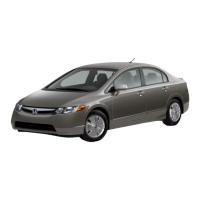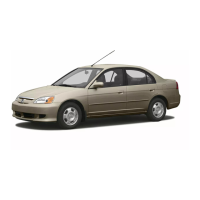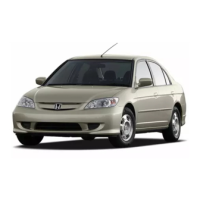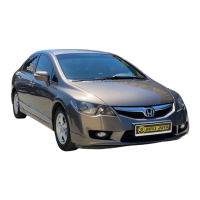
Do you have a question about the Honda 2010 Civic Hybrid and is the answer not in the manual?
| Brand | Honda |
|---|---|
| Model | 2010 Civic Hybrid |
| Category | Automobile |
| Language | English |
Key safety recommendations for occupant protection and safe vehicle operation are provided.
Overview of safety features like safety cage, airbags, and seat belts working together to protect occupants.
Details on seat belt system components, proper use, and importance for adult and child safety.
Explanation of front, side, and side curtain airbags, including their function and deployment.
General guidelines for safely restraining infants, small children, and larger children in vehicles.
Diagram and labels identifying the location of various controls on the dashboard and steering wheel.
Overview of the instrument panel, including indicators and gauges for vehicle operation.
Detailed explanation of gauges like speedometer, tachometer, fuel, and temperature readings.
Information on using master keys, valet keys, remote transmitters, and key care.
Explanation of automatic and manual climate control operations, including fan speed and air direction.
Overview of standard and optional audio systems, including radio, CD, iPod, and USB device operation.
Details on how the vehicle's security system protects against theft and vandalism.
Instructions for using cruise control to maintain a set speed on highways.
Guide to using the Bluetooth hands-free system for phone calls and voice commands.
Step-by-step instructions on how to safely open and close the vehicle's hood.
Procedure for checking the engine oil level using the dipstick and adding oil if necessary.
Explanation of EPA estimates, factors affecting fuel economy, and how to calculate actual mileage.
Information on installing accessories, modifying the vehicle, and potential impacts on safety and performance.
Recommendations for vehicle operation during the first 600 miles to ensure long-term reliability and performance.
Guidance on selecting the correct unleaded gasoline, octane rating, and additives for optimal engine performance.
Instructions for starting the engine under various conditions, including cold weather and with a dead battery.
Explanation of the Continuously Variable Transmission, shift lever positions, and engine speed limiter.
Details on front disc brakes, power assist, regenerative braking, and creep aid system features.
Overview of VSA system functions for cornering stability, traction control, and its interaction with other systems.
Diagrams showing the location of essential fluid reservoirs and dipsticks under the hood.
Procedure for checking and adding engine oil, including recommended oil type and capacity.
Instructions for checking wiper blade condition and replacing them when necessary.
Information on tire inspection, inflation guidelines, service life, and replacement recommendations.
Troubleshooting steps for when the engine does not start or operates slowly.
Procedure and safety precautions for jump starting the vehicle's 12-volt battery.
Immediate actions to take if the engine overheats, including safety warnings.
Explanation of the malfunction indicator lamp and potential causes for illumination.
Key vehicle specifications including dimensions, weights, engine details, and capacities.
Explanation of tire grading standards for treadwear, traction, and temperature.
Details on tire temperature grades and their resistance to heat generation.
Overview of vehicle systems designed to control emissions, including PGM-FI and catalytic converters.
Contact details and procedures for addressing issues with dealerships and Honda Customer Service.
Summary of new vehicle, emissions, battery, and parts warranties.
Instructions for reporting vehicle safety defects to the National Highway Traffic Safety Administration (NHTSA).
Information on how to purchase factory service and repair manuals for the vehicle.












